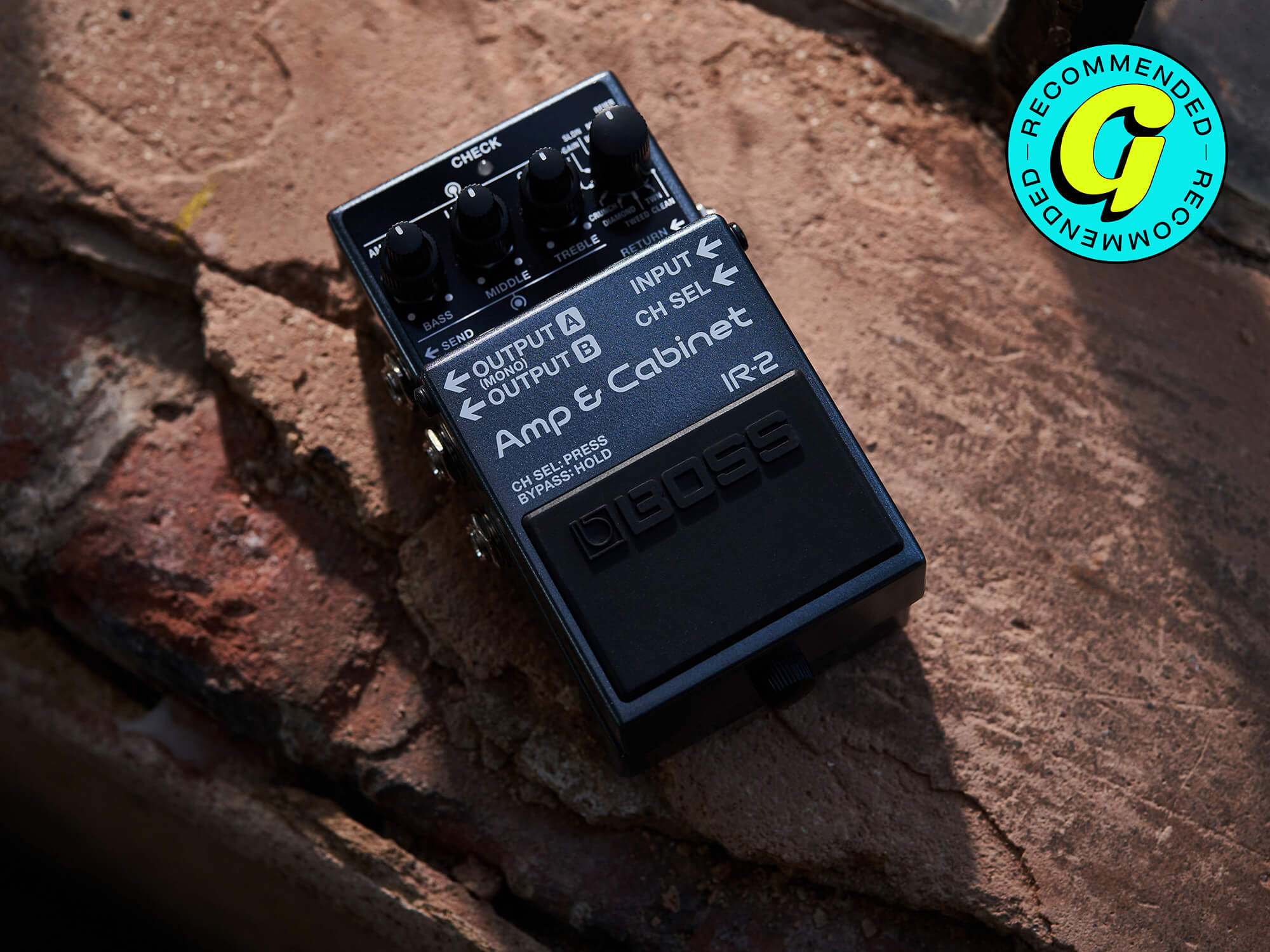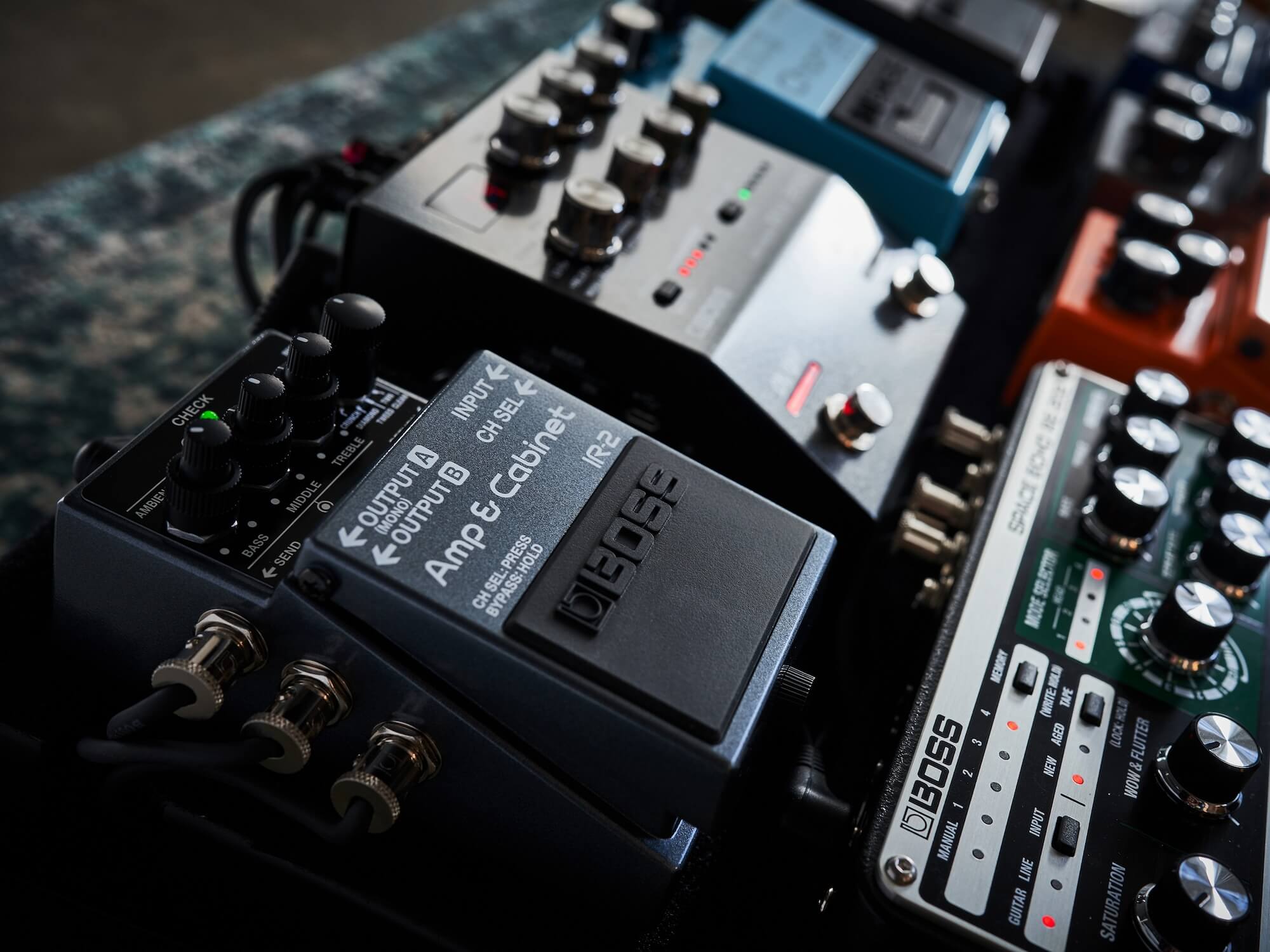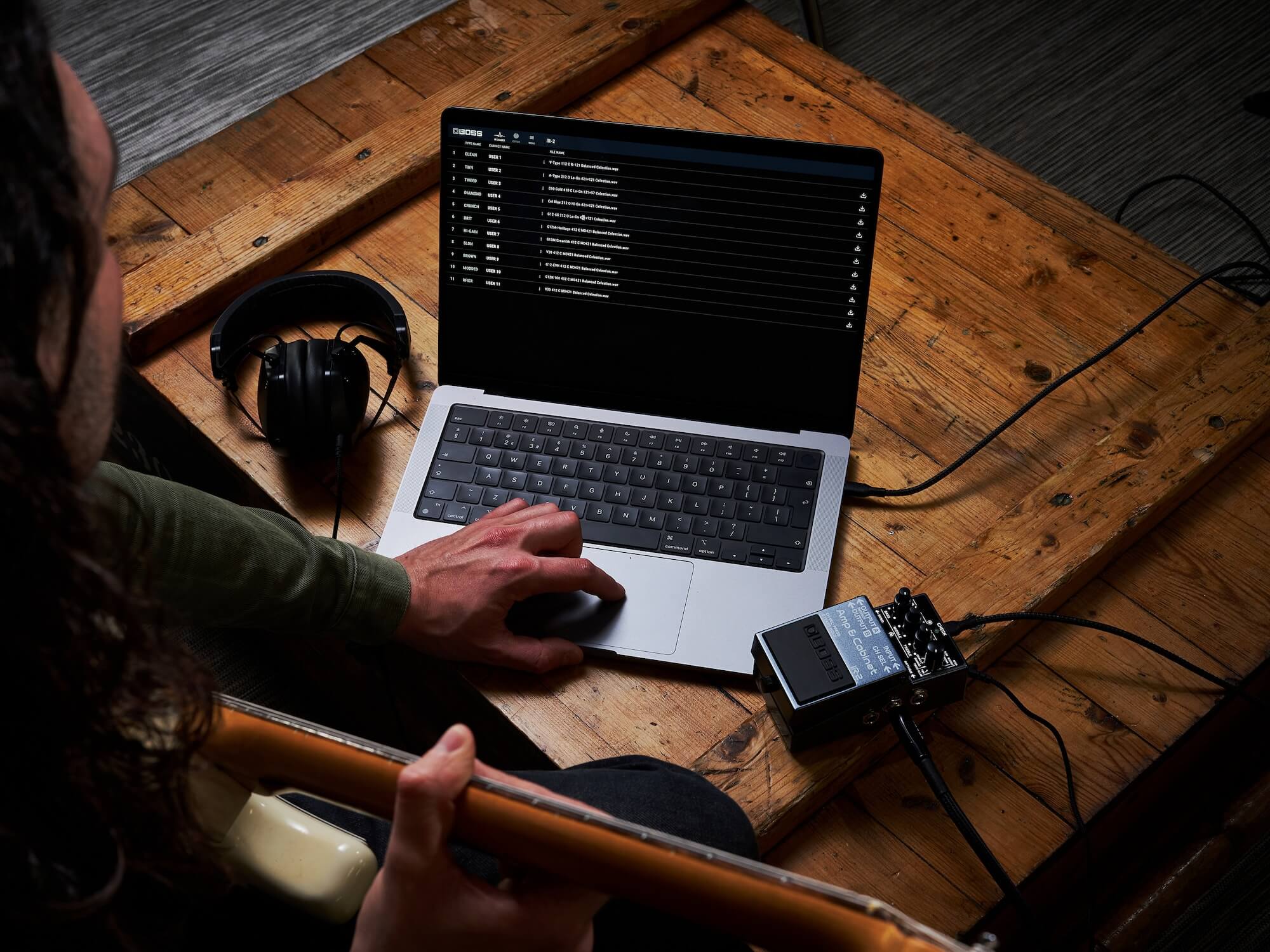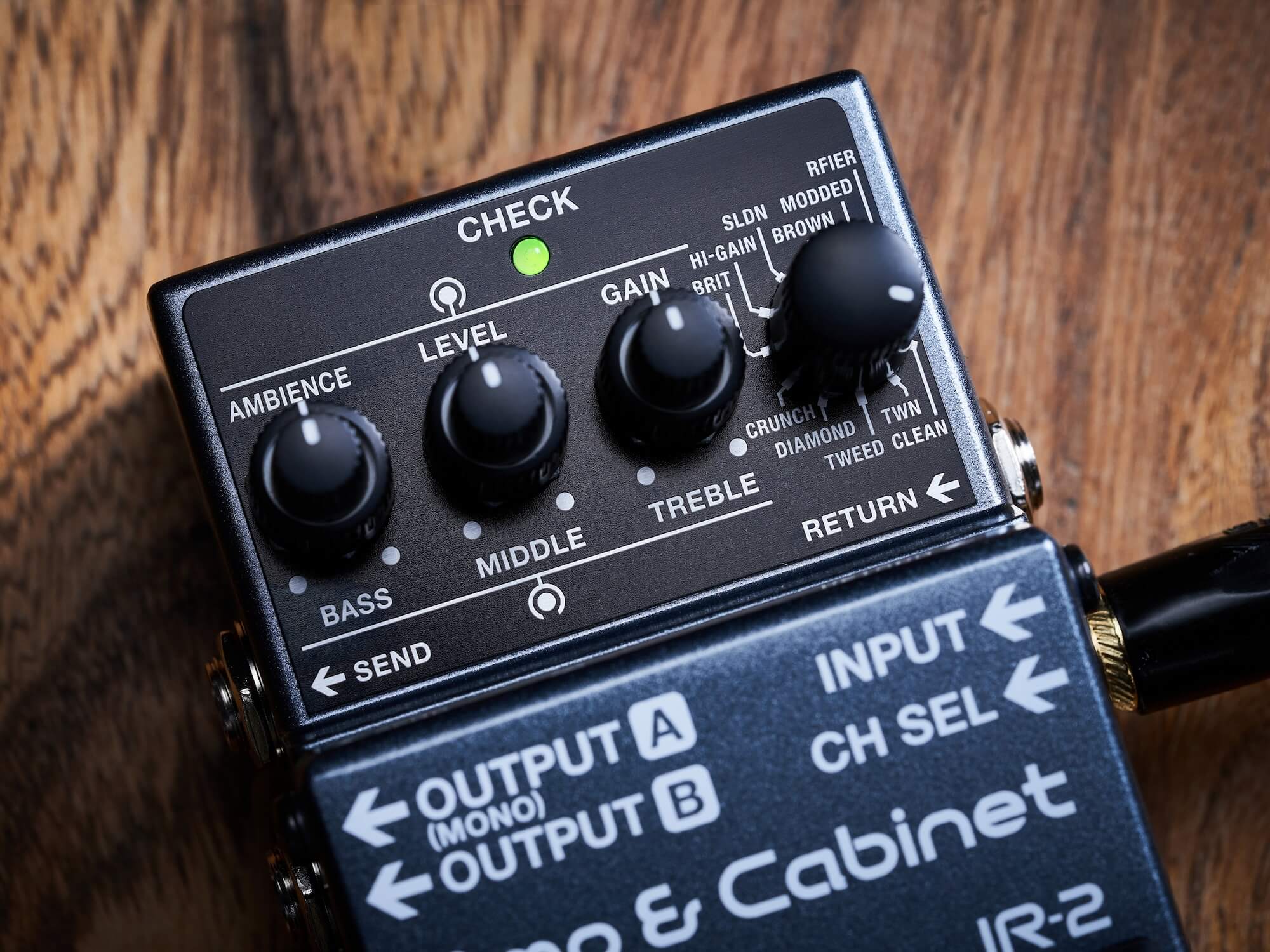Related Tags
Boss IR-2 review: A truly versatile workhorse that keeps up with pedals twice its price
More than just another direct solution, the IR-2 packs a lot of pedal into a tiny package

Image: Boss
Review Overview
Our rating
9
Our verdict
$199/£175, boss.info
So what is Boss’s latest pedal, the IR-2 anyway? If you believe its full name, it’s an ‘Amp & Cabinet Simulator’. Fair enough. You can’t say Boss’ on-the-nose product titles aren’t handy in that regard. It’s also, undoubtedly, a more compact version of the IR-200, putting many of the same features into Boss’s rugged and beloved compact format.
- READ MORE: Donner Triple Threat – Jack White-approved multi-effects might be the ultimate beginner pedal
More excitingly though, you can view it as a genuine challenge to the rest of the amp pedal world. It’s promising more functionality than things like the Strymon Iridium, the Walrus ACS1 and the UAFX amp pedals… while also being smaller. And about half the price. But is the IR-2 really as revolutionary as it seems? Well…
Is the Boss IR-2 easy to use?

Me and the IR-2 got off to a great start, mainly because the time between opening the box and playing guitar through a pair of headphones was, genuinely, about a minute. The Boss IR-2 draws just 160mA, so basically any (centre-negative!) power supply will work, and most of us have a good number of those lying about. Plugging in a guitar was also easy, but if it wasn’t, I think that’d be a ‘me’ problem.
But to actually get the headphones involved, did I have to find two more instrument cables and power up an audio interface (one that supports stereo real-time monitoring)? No, because the IR-2 has, shockingly, its own headphone jack. You’d imagine that this would be an obvious thing to include on an amp/cab pedal aimed at going direct. But, we live in an imperfect world, clearly.
Playing along to Spotify on my laptop through that pair of headphones was as easy as the initial setup. I installed the drivers, chucked in a USB-C cable, selected the IR-2 as my Mac’s audio output, and I was away. For the player without a studio’s worth of DIs and interfaces and the like, this is fantastic, hitting right at the core appeal of going direct at home. Given that it works as its own audio interface, I was also at this point ready to record, if I was so inclined.
When reviewing Universal Audio’s pricey and flawed the OX Stomp a few months back, I mentioned that to noodle with your direct rig on the sofa, you frustratingly needed to scatter a mini recording studio across your living room. Not so here. For once, I felt like a product’s aspirational lifestyle photography was achievable, even if my coffee table isn’t made of quite as nice stained pine. Oh, and while we’re on the UAFX comparisons – at no point during my time with the IR-2 did I have to even think about my smartphone. That’s a giant thumbs-up from me.
Oh, and being a standard Boss stompbox, the IR-2 can be powered by a 9V battery. If I wasn’t writing this in February in England, I could have taken it to the park and reviewed it from there. This, and the extensive I/O and general ease of setup, all combine to give you the impression Boss actually wants you to use the thing.
Does the Boss IR-2 sound good?

Let me put it like this: I had to actively try to get it to sound bad. The IR-2 packs 11 amps, enough to cover a lot of ground. But perhaps frustratingly, the upper-range of the gain spectrum is a bit overstuffed: there’s a Soldano SLO-100, a Dual Rectifier, two variations on generic high-gain sound (using Boss’ MDP amp modelling) and a “Brown” lead tone, all of which had tons of saturation ready to go.
Some did sound better than others, with the MDP-based sounds the most in danger of becoming fizzy. The Rectifier was a lot of fun, though, and easily achieved a scooped Metallica tone. But for bog-standard high-gain, I found myself sticking to the SLO-100 model.
At the other end of things, there’s a completely neutral preamp, a Fender Twin, a Fender Bassman, a Vox AC-30, a Boss MDP-based ‘crunch’, and a Marshall Super Lead. These were all broadly fine – none blew my mind in the way that say, UA’s Lion did, but all were absolutely usable. This is also ‘pedal platform’ territory, and in that regard, things were again functional but not spectacular. Overdrives, fuzzes and modulation pedals all behaved as you would expect before the various amp models – but the ‘feel’ of this interaction was a little flat. Some amp modellers have really nailed this aspect – the IR-2 is a little lacklustre in comparison.
Once you’ve dialled in a sound, you can press the footswitch (or use an external one) to change ‘channels’ – settings from the previous channel will be saved, and you can tweak the second channel to your taste for instant sound-switching. To be slightly pedantic about terminology, this is more like a two-preset bank rather than ‘channel switching’, because you’re not changing between two voices of the same amp, but for simplicity’s sake I understand why they called it that..
Which channel you’re in is indicated by the power LED being either red and green. Or, if you happen to be red/green colourblind (hello!), being either ‘on’, or… ‘on’. (Quick sidebar: if you’re a pedal designer and need to indicate a pedal being in either ‘A’ mode or ‘B’ mode, please: just use two separate LEDs. Those of us lacking in colour cones will thank you).
That aside, channel-switching is a neat feature, and obviously handy for doing a clean/dirty switch instantly, or just enabling an end-of-chain volume boost for a solo.
For cabs, all of these amp models use one of the several pre-loaded Celestion IRs. You can use Boss’s software to either load your own or assign different IRs to different models. Personally I never felt the need to, but it’s nice to have the option – I know that some guitarists have IRs they swear by and Boss has thought of of you here.
Does the Boss IR-2 work in a larger setup?

So, we’ve established that, as basically a fancy headphone amp for home use, the IR-2 is great, and if you want a piece of hardware to practice with that isn’t an overly complex multi-effect, then it’s an easy sell. But, what about those more involved direct rigs? Is the IR-2 worthy of sitting alongside a neat stack of side-by-side Strymons? Of going at the end of a gigantic, MIDI-controlled spaceship that draws more power than the rest of the gear on the (completely silent) stage?
Luckily, the IR-2’s great I/O isn’t just limited to that oh-so-welcome headphone jack and actually useful USB-C port. There’s stereo quarter-inch outs, an effects loop with a TRS stereo return, and a jack for an external footswitch for “channel” selection.
There isn’t, however, MIDI. The footswitch jack slightly (but not fully) makes up for this: if you’re using a complex switcher to send MIDI messages around your ‘board, that’s also very likely to have a footswitch jack that you can use to switch the IR-2’s channels. Of course, external preset recall is limited to the two slots, rather than the hundreds accessible on some units, but the ability to offload at least some sound switching to another unit is better than no external control at all. And going from clean to dirty, or from quiet to loud, could be all you need. But it’s a limitation worth considering.
Stereo support is a spectrum, and the IR-2 is about three-quarters of the way across it. Only one amp model can be loaded at a time, as the main input is mono. So you can’t do the instant double-tracking thing the ACS-1 does, nor can you run a stereo effect before the preamp section. But, on the other hand, you can run a stereo signal chain in the effects loop, and this will be more than enough for most approaches. Standard wisdom calls for mono overdrives/modulation pedals before the preamp, with stereo reverbs, delays and so on in the effects loop, and that’s totally achievable here. If you want to use the IR-2 as your only source of stereo-ness in your rig, the ‘ambience’ control adds in a little bit of width with a choice of room, plate or hall reverb.
The actual loop itself offers very useful synergy with the rest of the pedal, as no matter where you’re taking audio from – the headphone jack, the main outputs or the USB-C port – your entire signal chain will be represented, in full stereo. This is pretty damn neat, and again reduces the need for extra gear to make your direct rig even more direct. Instead, it’s all taken care of by a pedal the same size as your tuner. Hey, the future’s pretty cool, eh?
Is the Boss IR-2 worth it?
It’s safe to say that Boss absolutely backs up the challenge set by the IR-2. Really the only bad things I can say – and they’re not that bad – are that its sounds are a little more pedestrian than the hi-fidelity wonder available on some higher-end pedals, and there’s no MIDI. But as mentioned, at least there’s some external control, and 11 amps is far more than even the three offered by the Iridium or ACS1. And, lest we forget, it’s a $199 pedal that’s going toe-to-toe with units literally twice its price.
At time of reviewing, I’m clearly not the only one who’s figured this out: IR-2s are backordered all over the place. It’s not hard to see why. If you’re considering dipping a toe into the world of dedicated direct pedals, my advice is to wait until they’re back. It’ll be worth it.
